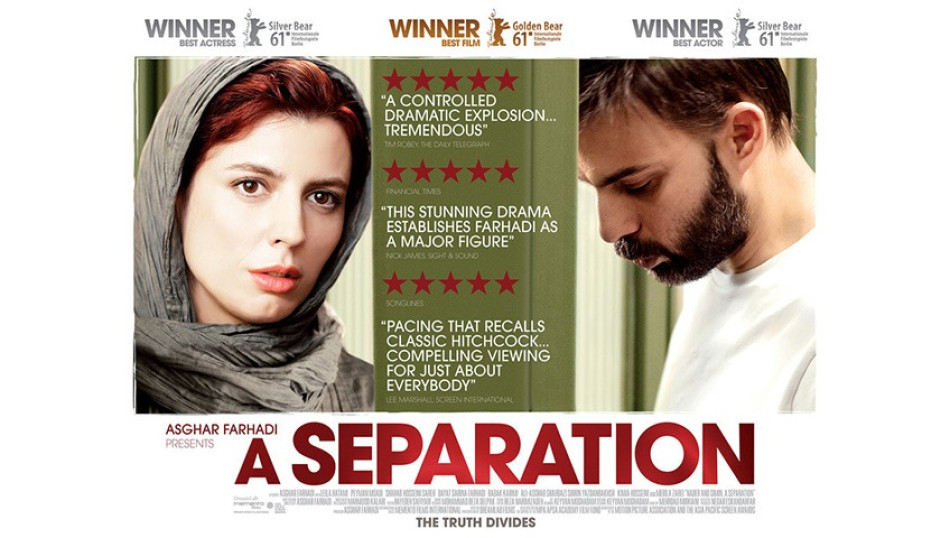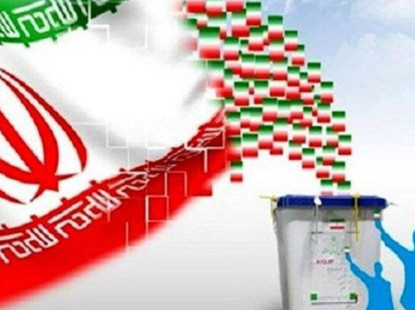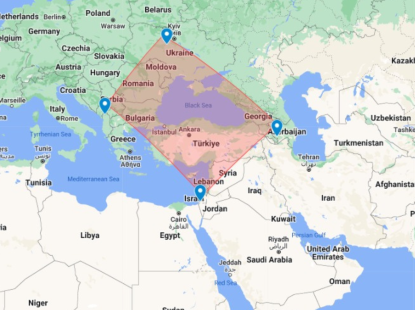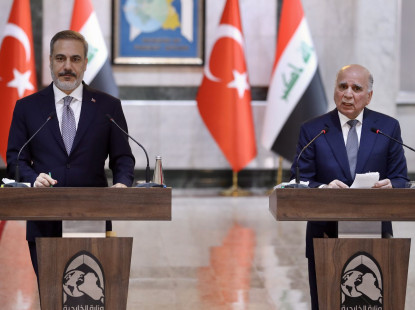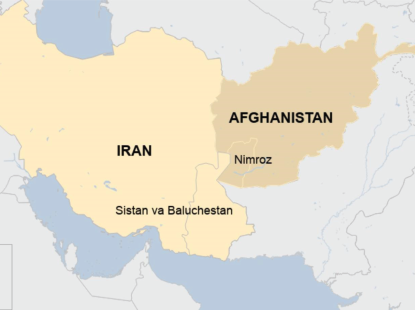Adventure That Does Not Endure As It Began
An author revolves around the same idea throughout his/her entire life span; similarly, a director actually shoots the same film with different vantage points throughout his/her entire life span. Accordingly, Asghar Farhadi's films revolve around the idea that anything or anyone is not like as it seems; let’s wait a bit to see the end of the full story.
While everything is going well, suddenly a web of calamity might come unnoticed. Some things could be misunderstood and even condoned. One might lose his/her tolerance or prudence due to the fear of early confrontation. Ambiguity along with obscurity is the building block of Farhadi’s suspense type of films. Farhadi is the only director who won an Oscar Award in Iran. The film “A Separation,” which earned him the Academy Award for the Best Foreign Language Film category in 2012, had been awarded the Golden Bear at the Berlin International Film Festival in the previous year. The film “Children of Heaven,” which was the first Oscar nominee from Iran, is a 1997 production directed by Majid Majidi. Farhadi has recently contributed his new drama “Forushande” (The Salesman) to the 2016 Cannes Film Festival and it won the Best Screenplay as well as the best actor awards with Shahab Hosseini’s performance. In this year’s Cannes Festival, the best director award (Palme d’Or) went to Ken Loach with his film “I, Daniel Blake.” By the way, Nuri Bilge Ceylan won Palme d’Or in 2014 with the “Winter Sleep (Kış Uykusu). It was noteworthy that Iran brought two awards to home from the 2016 Cannes Festival. Iranian actor Shahab Hosseini and actress Taraneh Alidoosti both were in the cast of The Salesman which was adapted from the “Death of a Salesman” by Arthur Miller. In his award acceptance speech, Farhadi was giving the codes of his works: “My films are not known for their joyfulness, so I’m very happy to have brought some joy to my people.”
When evaluating Farhadi’s line of work one must remember the early steps of Iranian cinema and especially its rise in the late 1980s. In the pre-Revolution era, an ideal regarding domestic cinema had been shared by the Islamic youth. This ideal, which occupied an important place in their agenda, entailed a successful transmission of distinct and high spiritual values. A devout conservative group, which includes artists, engineers, and architects along with Ali Shariati reflected their ideas through productions made by the Ayat Film Company. This movement shows a distinct track in the general Iranian cinema. The question in their mind was how Islam could be told through cinema. This group struggled for Islam to be understood correctly by means of cinema.
‘‘The question in their mind was how Islam could be told through cinema?’’
Ali Shariati wrote his book "Where Shall We Begin?" in reference to Nikolay Chernyshevsky’s “What is to be Done?” and he analyzed the importance of cinema and theatre so as to improve society’s understanding of religion. Works of the Ayat Film Company reflect the importance given by Islamic intellectuals and artists to the cinema in that era. In 1984 the Farabi Cinema Foundation was established just a few years after the Islamic Revolution. This Foundation owes a great debt to the accumulations and past experiences of those Islamic intellectuals. The developmental trajectory of Iranian and Turkish cinemas is quite similar.
International film companies and state funding for their productions engendered a natural outcome of making films that just entertain and kill some time without presenting a deep matter. We witness very rarely some faithful directors who search for authentic stories albeit with big personal sacrifices. In the 1960s social realism movement emerged in the art circles: the most prominent names in this category were Turkey’s Yılmaz Güney and Iran’s Dariush Mehrjui (Mehrjui produced films with social satirical characters after the Revolution and later he signed further works also called as “irfani or wise.”) In the late 1970s both in Iran and Turkey social realist genre cut off by the worldwide epidemic, erotic films. Soon after that the Islamic Revolution was on its way to come in Iran. In Turkey, a military coup came at September 12, 1980. In the following decade, Turkish cinema concentrated on two major types of stories: depressions felt by the leftist intelligentsia and the struggles of women who have been suppressed by society and family hierarchy. In the aftermath of the Revolution the domains of cinema, theatre and music were annihilated in order to be rebuilt from scratch. It was thought that these artistic fields had degenerated and despicable. After the destruction of those artistic domains, the Iranian state favored cinema in its entire reformation stage. Regarding the domain of music, there are many contentious issues according to the Islamic fiqh. Due to complicated questions about whether any song could be categorized under the haram circle such as singing (ghina) people perform some musical types such as rap music underground. As it was always used to be classical Iranian music is still active; however, female performers could sing publicly as long as they do this in the chorus. New developments in the cultural and artistic fields concentrate on narrative works. There are a few reasons for this. First, there is continuity in the Iranian culture regarding the persistence of narration and demonstration. Second, tazieh (condolence) theatre, which is accompanied with the Persian culture, provides a large infrastructural support for the cinema. The third factor is the Revolution. It entails a new spiritual atmosphere and it also needs to express itself to the world. Additionally, a new generation of the Revolution had to be mobilized with its new value sets and it also meant the success of using new technologies. Iranian Revolution is also called the Cassette Revolution. Widespread usage of new techniques has a unique role in conveying Revolutionary values to the youth and masses. Narration culture reinforces the Iranian state’s desire to communicate its Revolution to the domestic society and world audience; thus, the government generously subsidized the cinema sector. The success of Iranian directors owes great debt to Ayatollah Khomeini who had cautioned filmmakers so as not to make propaganda films. Under these conditions, Iranian directors, such as Abbas Kiarostami who had started to produce films long before the Revolution, have found an opportunity to keep their own styles. Within an environment of public restrictions and bans cinema was offering an attraction centre. Cinema, which was known as the “new cinema,” was perceived as a cleaned sphere based on fiqh principles. Some directors and actors whose names had been affiliated with the bad reputation of the old cinema had to leave the country due to a lack of employment opportunities. Having a sensation about the cleaning of cinema environment and purification of language Iranian families who had distanced themselves from the cinema before the Revolution started to have warm feelings; they have started to buy film tickets and they have even tended to send their daughters to the cinema schools.
While preparing the infrastructure of the new cinema the Farabi Cinema Foundation imposed some restrictions to Hollywood productions. It was definitely a great relief to young directors in regards to their sensitivities about film revenues. As opposed to old cinema which was moulded by star images the new cinema was aimed to be director-centered. Celebrities of the new cinema would be the film directors. Additionally, new principles required that cinema have to break with the old tradition. This meant that it was required to keep distance between male-female relationships, preventing violent and vulgar expressions and scenes, and the same was true for erotic scenes which have no place whatsoever in cinema. Certainly, there was a demand for respecting religious values in particular and sacred things in general. I conducted an interview with Mohammad Beheshti, the first manager of Farabi Cinema Foundation, in 1989. Beheshti laid out the main principles of new Iranian cinema: aesthetics, goodness, communication between human beings, perfectionism, searching of the truth, and sensitivity for environment (nature)… This context has pushed film directors for finding distinct sources. Due to constraints placed on female-male relationships new directors have tended to focus on child heroes or love stories that were also called as wisdom (irfani) stories. İrfan (wisdom or contemplation) could be defined as asking questions about the meaning of existence and an interpretive methodology that lead considering on Allah, absolute truth or matriculation. Limitations on rhetorical expressions were doubtlessly instigating some directors giving their messages through metaphorical meanings. Therefore, it could be mentioned about Tarkovski effect. Undoubtedly, 1980s was a period of trial and preparation. In the global media it would be confronted with surprise in case a film from Iran wins an award even in rare occasion. Saeed Ebrahimifar won the Golden Tulip award at the İstanbul International Film Festival in 1989 with his “Pomegranate and Cane” (Nar O Nay). Then, similar questions were also asked by cinema critics from Turkey. “How it could be possible to make films in a country that claims to have made an Islamic Revolution?” Undoubtedly the hegemony of the Hollywood cinema was not giving way to building a different type. Additionally, existing perceptions about art could not explain prevalent active connections between Islam and cinema as an agent of modernism. For example, how conditions and concepts such as love, separation, reunion and yearning could be convincingly narrated in a film where man and woman do not touch each other? Iranian directors were also trying to find answers to this question. They just pushed the limits of their comprehension in order to be able to make their films plausible; they just did trial and errors.
‘‘Due to constraints placed on female-male relationships new directors have tended to focus on child heroes or love stories that were also called as wisdom (irfani) stories’’.
Due to limitations imposed on females they had generally been given secondary characters in the films until the early 1990s. Within the context of searching for wisdom (irfani) cinema the theme love is considered as the divine love. Mohsen Makhmalbaf would shoot his film “Time of Love” (Nobat e Asheghi) in Istanbul in 1990. It was Mohsen Makhmalbaf’s first film in which love is taken out of the wisdom (İrfani) cinema context. It is possible to say that all those rules and limitations imposed by the new Iranian cinema forced directors, who had internalized them, to search for new narrative styles. The 2006 film “Santouri Ali” that was directed by Dariush Mehrjui is a successful production to be able to give a sensitive love story without corporal touch. Nonetheless, there is a widespread complaint among Iranian actresses about not being to use their body language properly due to rules about veiling. One example is Golshifteh Farahani, who was in the cast of the film “Santouri Ali.” She is seen as one of the most successful actresses in the new generation. Farahani is one of the players who have left the country in order to be able to perform at full capacity.
In the 1990s conservative leaders and bureaucrats imposed ideological limitations on cinema. During the Ahmedinejad governments with the impact of increasing censure rules new contents were added to the portfolio in the 2000s. Limitations in the context of mahram (or close relatives) were accompanied with new censure practices including symbols and themes. Conservative populism was redefining the cinema with its own themes in all times; and in the name of “engineering transactions” it looked for ways to instrumentalize cinema as opposed to the Revolution’s initial principles. Dull religious films were produced sometimes under the title of “the cinema of meaning” and sometimes under “the cinema of truth and justice”, unlike what the philosophical founders of Iranian new cinema wished for.
It could be said that while intellectual films were disdained and the tone of usual suspicion towards directors, who participated in the international festivals, was rising. On the other hand, we noticed the revival of Persian images that were kept away after the Revolution in the melodramas with high box office reception (equivalent of Yeşilçam Cinema in Turkey). Despite of their shallow character, the films without political risks would be held dear because they have a time-killing function. Conversely, the productions of qualified directors were giving the viewers the impression of déjà vu. Cinema critics were using a concept “Kiarostami syndrome” in the 1990s by referring to the directors who make films with slow rhythm, prioritize domestic elements and take into account the delights of western film festivals. It is certain that festival performance played a role in gaining legitimacy for directors; thus, trends and flavors held by juries created a pressure on a new generation of directors when they search for a topic and style.
Expectations from the new cinema came into existence with the loyalty of child hero in the “Where is the Friend’s Home” (Kiarostami 1987); in the “Bread and Flower” (Makhmalbaf) the aesthetic of longing for justice shared by the revolutionary youth was assessed. After these two giant films, could there be a new theme to be chased by a director? It seemed that the new cinema made the biggest surprises and it employed the most interesting themes specific to Iran. Of course, there are endless stories. Actually, when Farhadi came to the front as a director in the mid-2000s Iranian cinema was signaling trouble due to a desperate need for a new beginning and fresh scripts.
Iranian cinema focused on performing a new form that was purified from Hollywood effects. Therefore, directors concentrated on stories that embrace tradition and domestic content and, while doing so, they were able to discover appropriate tones in line with stories. Cinema could be seen as a modern art or technique and directors put into practice subtlety of their art tradition through cinema. So the output of modern cinema directors often display a specific nature that could be named as “The Poem of the East.” We could name some Iranian directors: Amir Naderi, Abbas Kiarostami, Dariush Mehrjui, Mohsen Makhmalbaf, Tahmineh Milani, Reza Mirkarimi, Majid Majidi, Ebrahim Hatamikia, Rakhshan Bani-E’temad, Puran Derakhshandeh, Jafar Panahi and Kamal Tabrizi. These prominent directors, who made films based on ideals set by the Farabi Cinema Foundation, won numerous awards from worldwide film festivals. Undoubtedly, different worldviews shared by these directors permeated into their films. However, they were supported as much as they adopt the basic principles. The film “Nargess” (1992) constitutes a good example for this. Rakhshan Bani-E’temad, who does not follow an Islamic worldview, directed “Nargess” that tells a story of a poor woman. Critics categorized this film as a production that encompasses religious elements. Similarly, Kiarostami, who followed his own sui generis line since 1968, can also be seen in this category with his film “Where is the Friend’s Home.”
We can count many reasons for the French (New Wave) and Italian (New Realism) effects on the first generation of directors. The experiences of such directors as Bergman, De Sica, Tarkovski, Kieslowski, Trier, Antonioni and Yılmaz Güney were a source of inspiration for at least two decades. The New Cinema was excluding eroticism and violence. Then, how could it achieve sustainability? With his Islamic worldview Reza Mirkarimi was a successful director with his distinct successful productions. It is a comprehensible development that directors searched for new methods outside of the Revolutionary generation due to two major pressures: Fear of repetition and box office pressure.
While the first generation was avoiding violent scenes, the new generation tended to show exactly the opposite attitude. Besides, they do not follow the first generation that tended to focus on child-centered films in order not to fall into the censure trap by trying to construct a legitimate field for themselves. The main reason behind their success was their decent scripts. Directors such as Asghar Farhadi, H. Asadian, Ahmad Reza Ahmadi and Ali Rafie are producing films which take into account box office concerns and their thriller movies remind us the themes and discourse of the products of Hollywood films directed by directors Kubrick, Scorsese and Haneke. Asghar Farhadi is a director whom I have followed since his film Fireworks Wednesday (Chaharshanbe Soori-2006). He was born in Esfahan in 1971 and graduated from the University of Tehran, Faculty of Fine Arts, and Department of Theatre. He won numerous awards form prestigious festivals both at home and abroad. His interviews with media members often remind us the significance of the script. It is evident that he pays attention to the traceability of his film by audience and he thinks over this issue, unlike the generation of Revolution that never cared about the film ratings. He is searching for ways to communicate with his audience by trying to synthesize phenomenon and images that thought to be globalized with their counterparts at the local level.
It can be asserted that he makes an effort in order not to go against the fundamental values of the revolutionary cinema. He underlines his tendency to focus on family and human relations in his films in one of his interviews: “The relationship between partners, within the family framework, has always been the most common, basic and complex relationship in human history. Sorrows, contradictions, fights and happiness are experienced, an issue that I can talk about throughout my life.
Farhadi uses his camera at bay through a very careful language surrounded by a meticulous craftsmanship. On the other hand, Mohsen Makhmalbaf, who is seen an actor of the revolution cinema, has begun to keep his works outside his country as he found it difficult to reflect his stories after the Kandahar Expedition. Certainly, as an example, Kiarostami displays the fact that there is also an alternative way. The way to reach a political language can be found into an authentic script. In Berlin Film Festival (2011) Farhadi made a speech while taking the Golden Bear award thanks to his film “A Separation”, saying “This award is an opportunity to express my gratitude to my patient, precious and big-hearted Iranians who thought me to learn various stories.” This speech might be interpreted as an attitude not to be framed by political opposition but to continue making films. It can be asserted that he follows Kiarostami.
The common thread of Farhadi films is the coverege of lives which are open to storms. The tranquility of the picture might be an illusion as storm may break up and the audience can foreshadow this. I think that “About Elly” (Darbareye Elly) is the film that best represents the Farhadi cinema. The story is about a group who spends their time in a summer resort and the peaceful group is disrupted by a catastrophe. Just like a Dionysian touch, the group members turn into evils. People, who were dancing, laughing, singing, joking, just tansformed into monsters. The wife tells a lie to her husband, the man hits her. Good friends spat, fiancés are like a hell. Eli, a lost girl, may have drown or managed to survive. Where Eli may have gone? What might have happened? Who really knows Eli? Even Sepideh who asked for Eli to participate the group does not know whether she is engaged or not.
Thanks to its scenario “About Eli” is a kind of film that successfully reflects the depressive and chaotic side of its characters that not just stands for a group of friends. The film carries away the audience to focus on societal attitudes towards the causes and effects of crises. Exuberance, though sits on a flimsy ground, happiness is prone to sorrow. Involuntary obedience and relationships that do not value consent fail at some point, and these deficiencies follow people and society wherever they go. The last but not the least, love is the closest friend of hatred which waits for a tiny crack to get in. That is the reason why the artist tries to end his story with just the way he begins. Therefore, he tells the reasons of why he goes off the rails again and again and again.
Disclaimer: The viewpoints expressed by the authors do not necessarily reflect the opinions, viewpoints, and editorial policies of IRAM.
